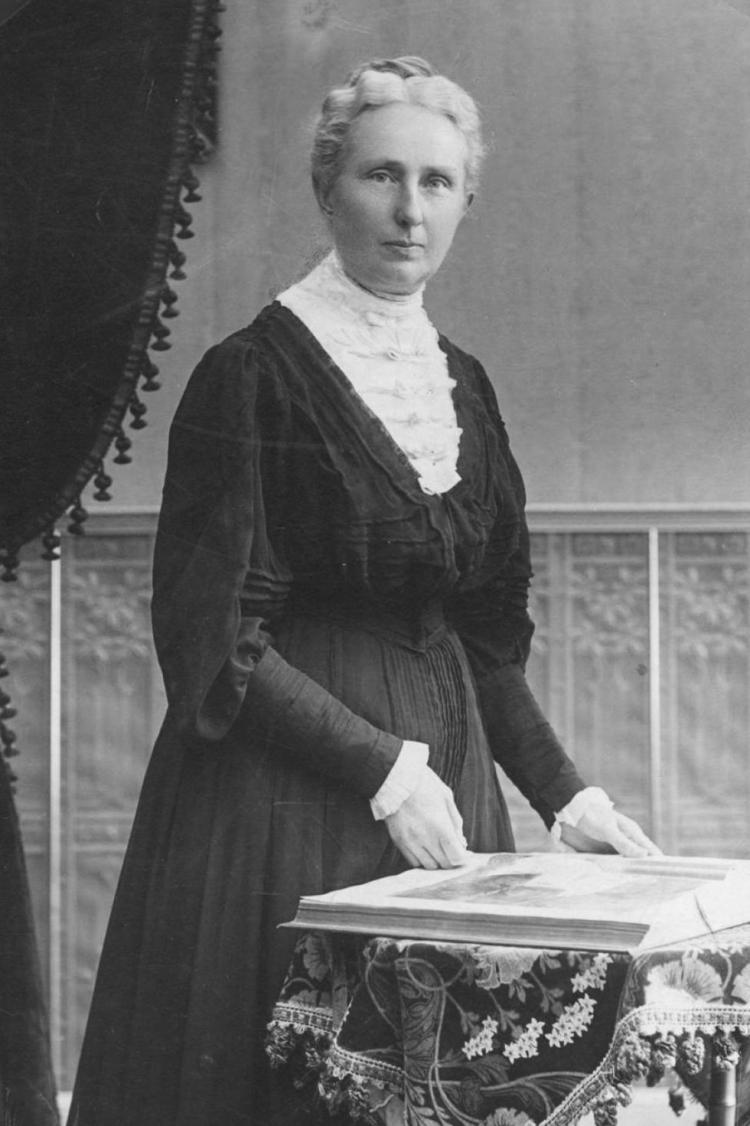Women’s history snapshot: CU’s first woman faculty member, now a university icon, hesitated to come West
Mary Rippon was a bona fide pioneer who became a University of Colorado icon, but CU almost did not become her home.
CU’s first president, Joseph A. Sewall, invited Rippon to teach at the University of Colorado, which had just opened its doors in September 1877. Rippon initially declined, noting that she’d just accepted a high school teaching job in Detroit.
Rippon—whom history books conspicuously call “Miss Rippon,” thus underscoring the fact that she was not married—had already led a vigorous academic life by the time Sewall recruited her. After graduating from high school, she studied abroad for five years, spending two years apiece in Germany and Switzerland, plus one year in France.
While in Detroit, a minister who’d just returned from Boulder urged her not to go. As the clergyman told it, the university comprised nothing but a single building “way out on a prairie.” Further, he warned, that one building would soon collapse, killing all inside.
Rippon ignored this advice, accepting an appointment to join the faculty in January 1878.

At the top of the page: Completed in 1876, Old Main was the first building on CU Boulder campus. Above: Mary Rippon was the first female professor at CU and is believed to be the first female faculty at a state university (Photo courtesy of CU Boulder Archives).
As the story goes, three things changed her mind. One was news that Charles Buckingham, a Boulder banker, had donated $2,000 to purchase books for the new CU library. Another was Helen Hunt Jackson’s inspiring writing, accompanied by watercolors paintings, of Colorado wildflowers. And the third was President Sewall, whose repeated invitations helped persuade her to come.
She took the train from Detroit to Cheyenne, Wyoming, then south to Boulder, where Sewall met her. As Rippon observed, “The daylight had faded, but a new moon cast enough light to show up the wonderful line of the snow-clad mountains.”
In the crisp January air, Sewall asked Rippon how things looked to her.
She recalled: “With eyes turned toward the silhouette at the west, and thoughts on the Alps, my one word was ‘glorious.’”
Sewall appeared relieved and said, “Well my spirits have risen 100%. My wife had told me that you would not stay two days in this lonely place.”
But stay she did. Her job was to teach French and German, plus to give “some instruction in the branches of math and English grammar.” On this then-remote outpost, with a handful of college students, she became the first woman to be a professor at CU and is thought to be the first female faculty member at any state university.
Nine men and one woman had entered the inaugural first-year class of students in 1878, but only six, all men, continued to graduation. For the young men, it was easy to leave school to find good-paying jobs as cowboys. It is not clear, but not hard to imagine, what prompted a woman to leave.
When Rippon joined the university, having studied abroad and lived as an independent person, she was entrusted with the education of the young, yet she did not have the freedom to vote. That right was not recognized until 1894, after a statewide referendum recognized female suffrage.
She also received unequal pay. President Sewall had an annual salary of $3,000 in 1878. The first faculty member, a man, was paid $2,000. Rippon, hired at about the same time, got $1,200 a year.
The six men who composed CU’s first graduating class in 1882 might not have thought such inequity amiss. As one of the graduates wrote, two of the six graduates “would vote for ‘women’s rights,’ meaning the suffrage, one would not, one is for woman’s rights—rights to manage the household—while two are lukewarm as to the whole question.”
Further, the graduate said, one of the six graduating seniors was opposed to “co-education,” in which women and men studied together.
These shades of information suggest the contours of life for Mary Rippon, who remained at the university until she retired in 1909. Today, the campus’ outdoor theater, home of the Colorado Shakespeare Festival, bears her name. It is an homage to her pioneering spirit, which, in other ways, endures.
Sources: Glory Colorado, a History of the University of Colorado, 1858-1963; The University of Colorado, 1876-1976.



